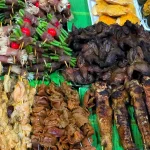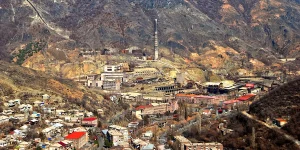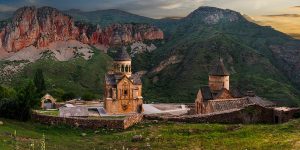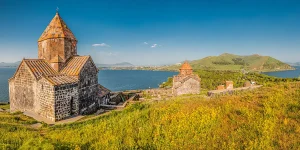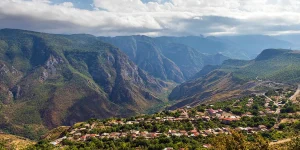Introducing Armenia’s Traditional Dishes
Armenia offers more than beautiful landscapes and ancient monasteries—it’s also home to one of the most distinctive food cultures in the region. This guide highlights the best food to try in Armenia, focusing on national dishes that are truly local, culturally meaningful, and widely enjoyed today. Whether you’re eating in a Yerevan restaurant or sharing a home-cooked meal in the countryside, this list will help you find and recognize the country’s most iconic flavors.
This article offers a practical checklist of national dishes, organized by course and eating style, to help you explore what to eat during your trip. For a broader understanding of Armenian cuisine—its roots, ingredients, and regional diversity—check out our detailed guide.
To help you track your culinary journey, we’ve included a downloadable interactive PDF checklist at the end of the article. Use it to tick off dishes and jot down tasting notes.
Note: This guide is designed to remain as objective as possible. We’ve avoided personal opinions to let your own taste shape the experience. For local stories and personal food adventures, browse our Stories section.
Table of Contents
Starters, Soups & Salads: The Best Armenian Appetizers to Try
Spas
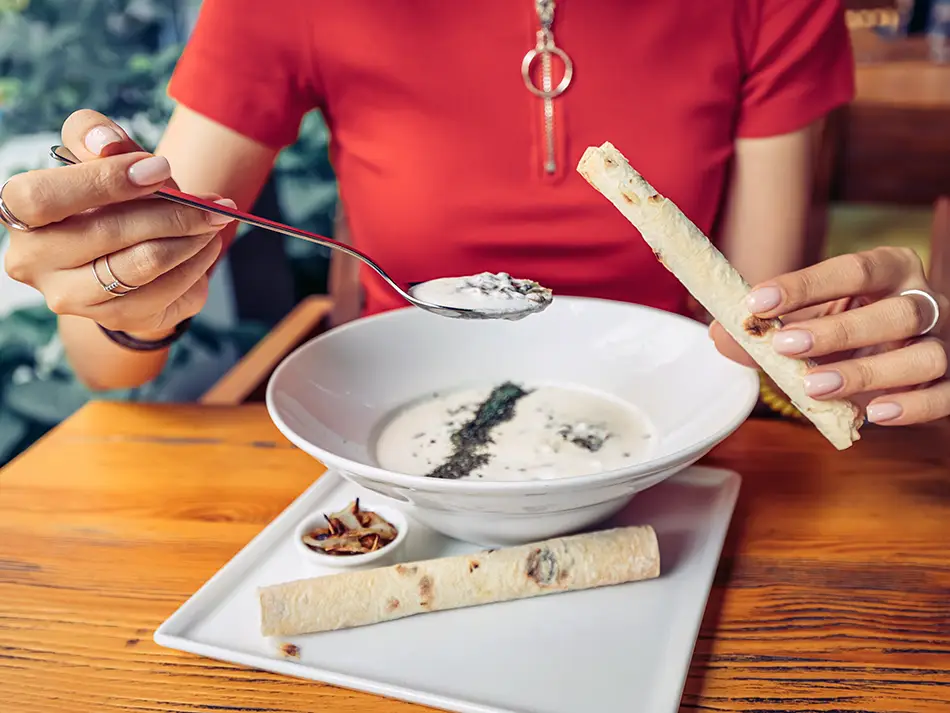
Spas is a traditional Armenian yogurt soup made with matzoon (fermented yogurt), wheat or rice, and fresh herbs, most commonly mint or cilantro. The soup is simmered gently until it thickens slightly and is typically served warm, though it can also be enjoyed chilled in summer. The balance of creamy tanginess and herbal aroma gives Spas a distinct character among regional soups.
Fun Fact
Spas is often served to soothe hangovers or mild stomach ailments due to its probiotic-rich base.
Eech
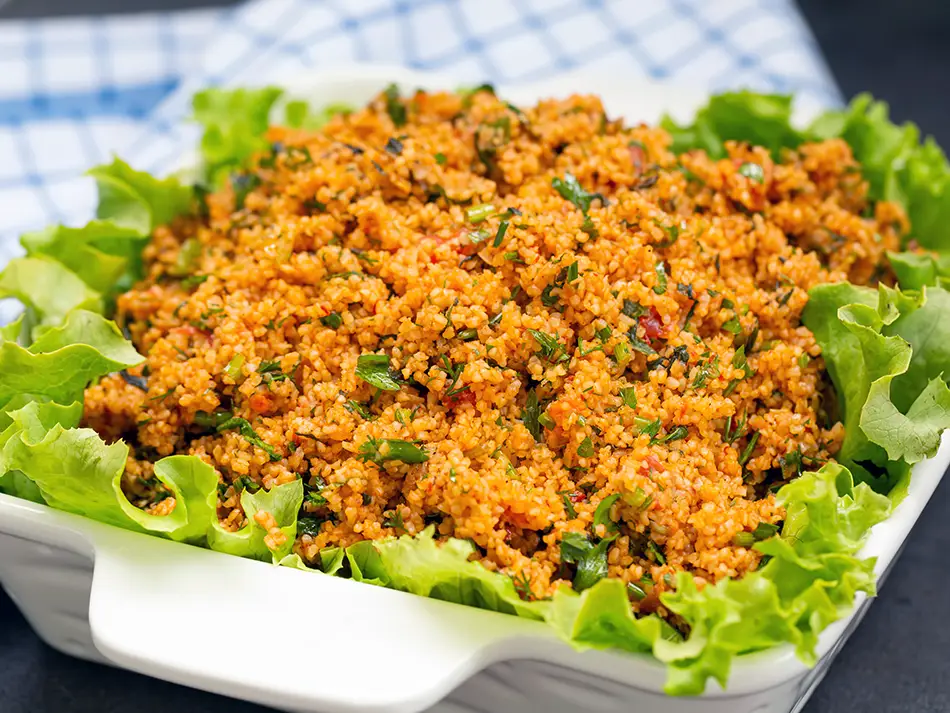
Eech is a bulgur-based salad made by steaming fine bulgur with tomato paste, onions, parsley, and paprika. It’s typically served at room temperature and often functions as a meze or light starter. The dish is known for its soft yet chewy texture and balanced acidity. Eech is popular in Armenian households and frequently appears in vegetarian spreads. It has no strong regional association and is considered a national staple.
Khash
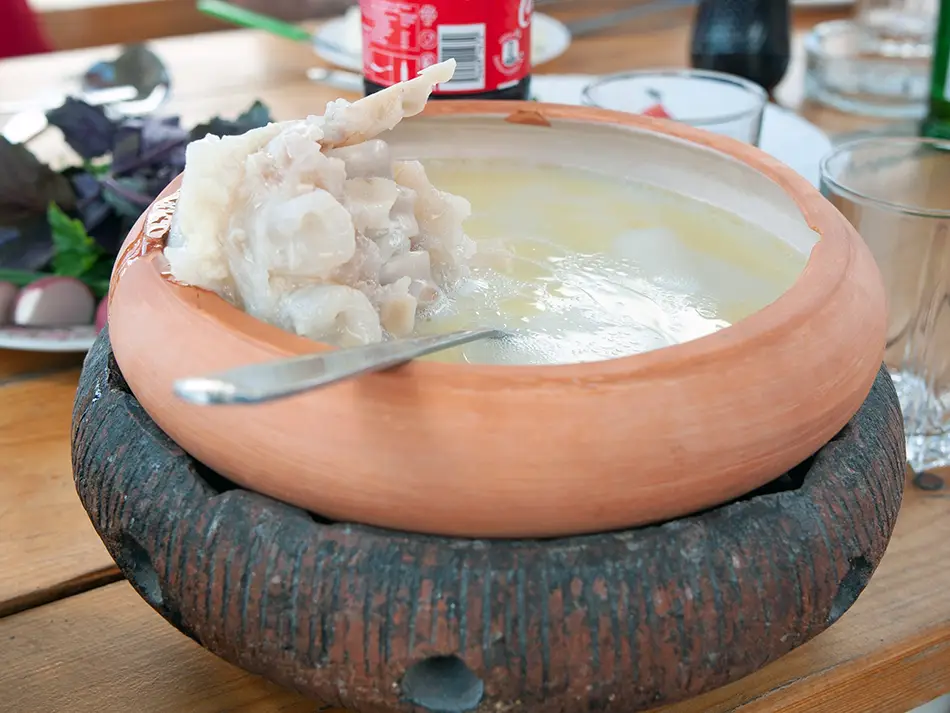
Khash is a slow-cooked beef or cow’s foot broth, traditionally prepared overnight and served early in the morning.
The dish is consumed hot and unseasoned, allowing diners to add garlic, salt, vinegar, and dried lavash to taste. It’s commonly eaten in winter and often shared communal.
Fun Fact
Khash has a strong ritualistic and social function—it’s traditionally eaten with friends, accompanied by long toasts and local spirits.
Kololik
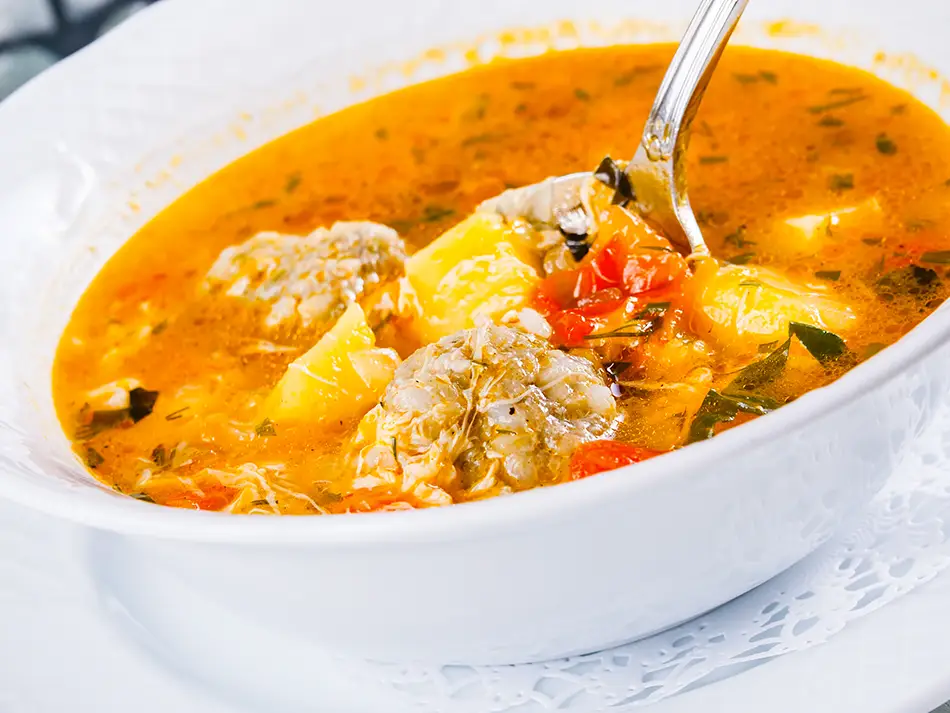
Kololik is a meatball soup featuring large lamb or beef meatballs boiled in broth with chickpeas, carrots, and herbs. The meatballs are typically mixed with rice or cracked wheat, giving them a dense yet tender consistency. Kololik is especially popular in family meals and festive settings, often tied to the Ararat Valley region.
Vospapour
Vospapour is a lentil soup made with red lentils, onions, carrots, and tomato. It’s hearty, protein-rich, and a popular option during fasting periods, as it contains no meat or dairy. The texture is usually thick and slightly grainy, with a mild savory taste. Vospapour is a common household dish across the country.
Mantapour
Mantapour is a clear soup that incorporates boiled dumplings (manti) served in seasoned broth. Unlike the baked version of manti, this soup-style variation emphasizes the light broth and delicate dumpling skins. The dish is especially prevalent in rural areas where broth-based meals are more common during winter.
Putuk
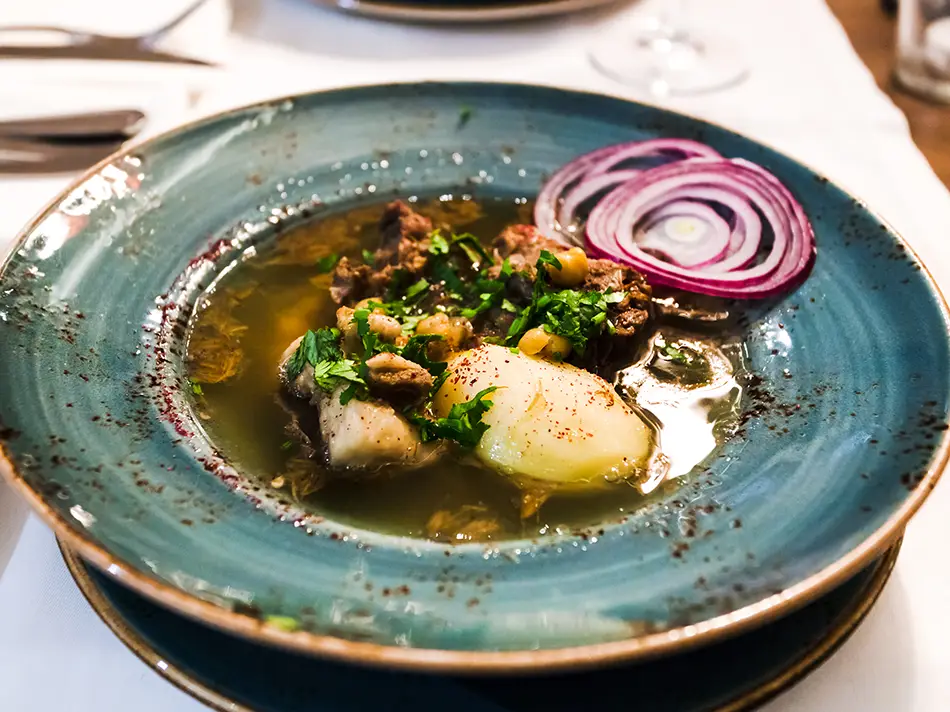
Putuk is a traditional clay-pot stew made with chickpeas, lamb on the bone, potatoes, and tomatoes. Slow-cooked in sealed earthenware, the dish develops a deeply infused flavor. It is particularly associated with the city of Gavar.
Fun Fact
The name “putuk” comes from the unique pot it’s cooked in, which is broken open to serve the stew.
Gomgush
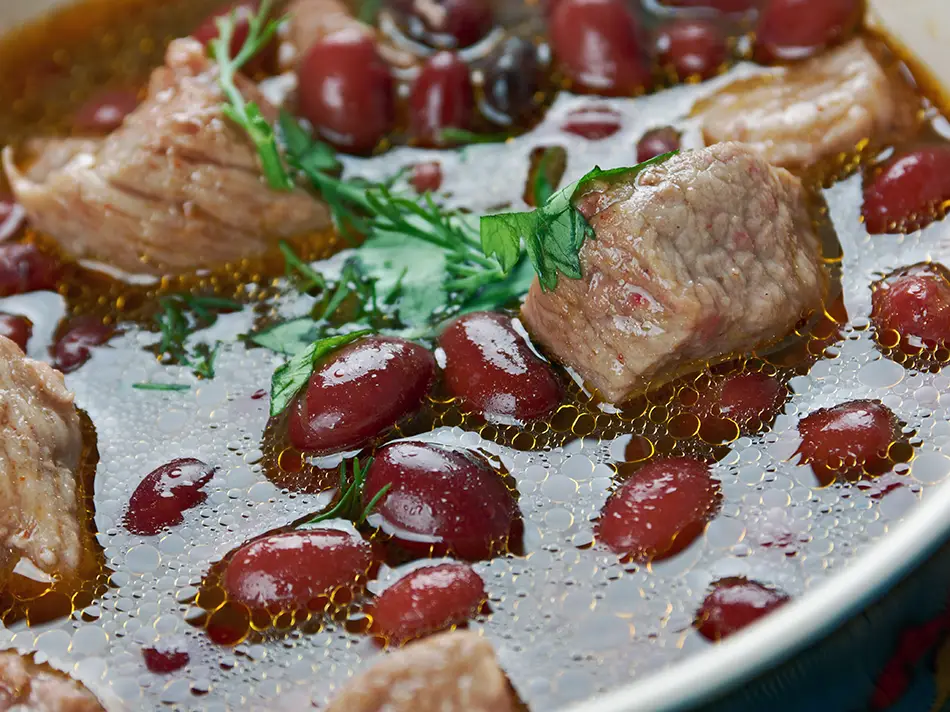
Gomgush is a vegetable and meat stew, similar to a thick soup, made with a mix of green beans, potatoes, tomatoes, and lamb or beef. It’s cooked slowly to achieve a soft, integrated texture. This dish is especially common at rural celebrations and is often served at large gatherings.
Aveluk Soup
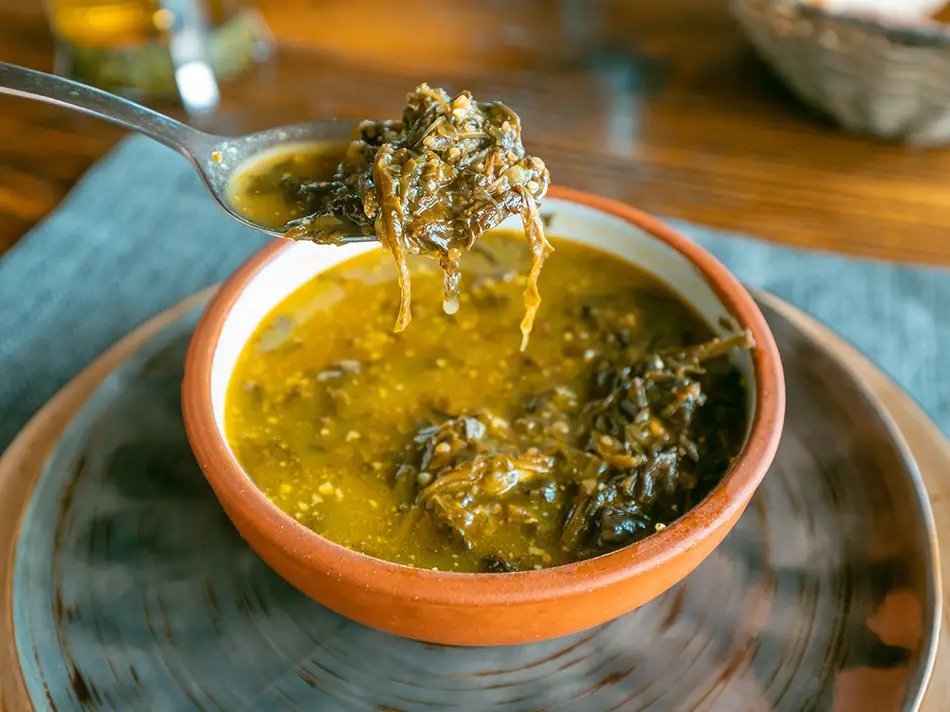
Aveluk soup is prepared using wild sorrel (aveluk) that’s dried and braided into ropes, then rehydrated and simmered with lentils or beans, garlic, and onions. It has a slightly sour and earthy flavor profile. Aveluk is foraged in spring and used year-round thanks to its drying process.
Ailazan
Ailazan is a slow-cooked vegetable dish, containing eggplants, potatoes, peppers, tomatoes, and sometimes beans. It’s layered and baked until tender, often seasoned simply with salt and herbs. It’s common in summer and early autumn, when vegetables are in peak season.
Basturma
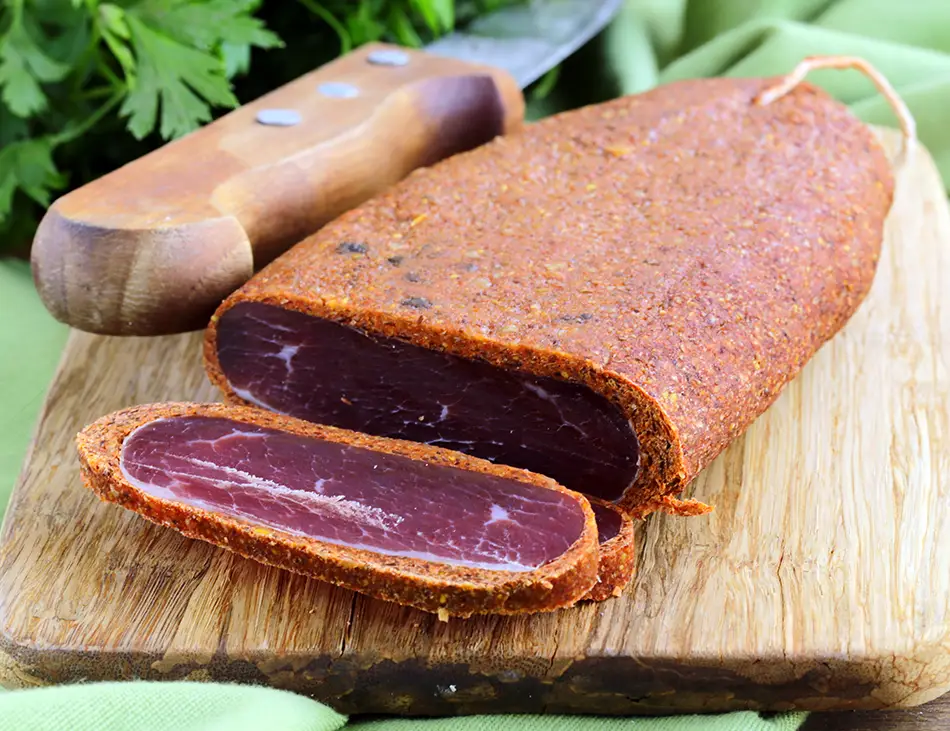
Basturma is a highly seasoned, air-dried beef delicacy, coated in a thick paste of crushed fenugreek, garlic, paprika, and other spices called chaman. After curing and drying, the meat develops a dense, chewy texture and an intense, aromatic flavor. Often sliced thinly and served cold, basturma is typically eaten with bread, pickles, or cheese. It’s widely available at markets and often features in celebratory spreads.
Main Courses: Traditional Armenian Dishes
Armenian Harissa
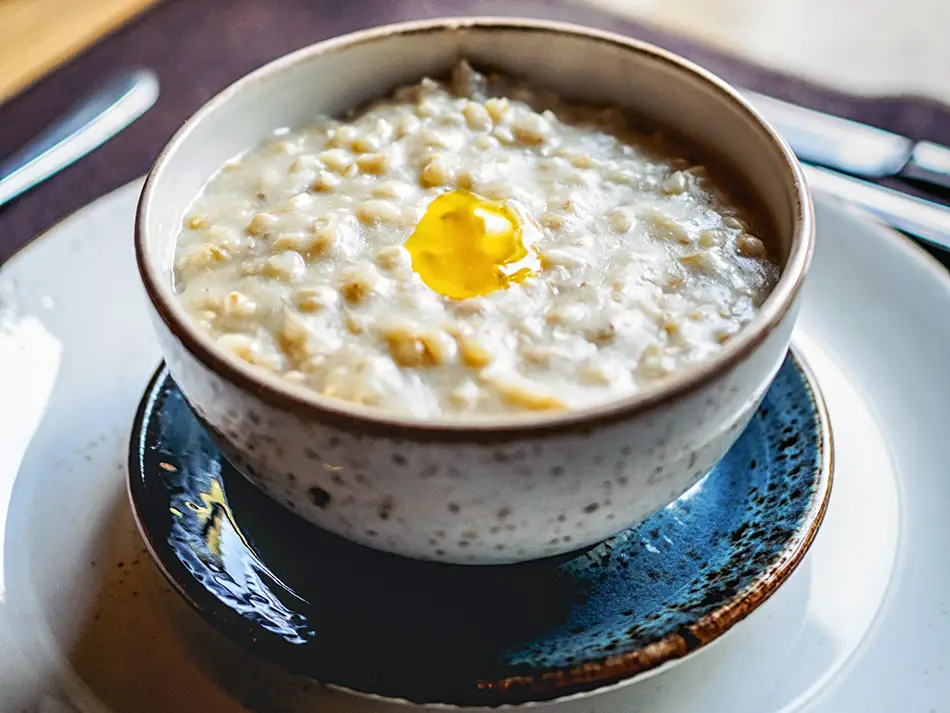
Harissa is a pounded wheat porridge with slow-cooked lamb, traditionally simmered for hours until the meat dissolves into the grain. It has a thick, sticky texture and is customarily stirred continuously to prevent sticking. It is a national comfort dish and often associated with festivals or memorial feast.
Fun Fact
Harissa was historically cooked in large communal pots during times of hardship or celebration.
Dolma
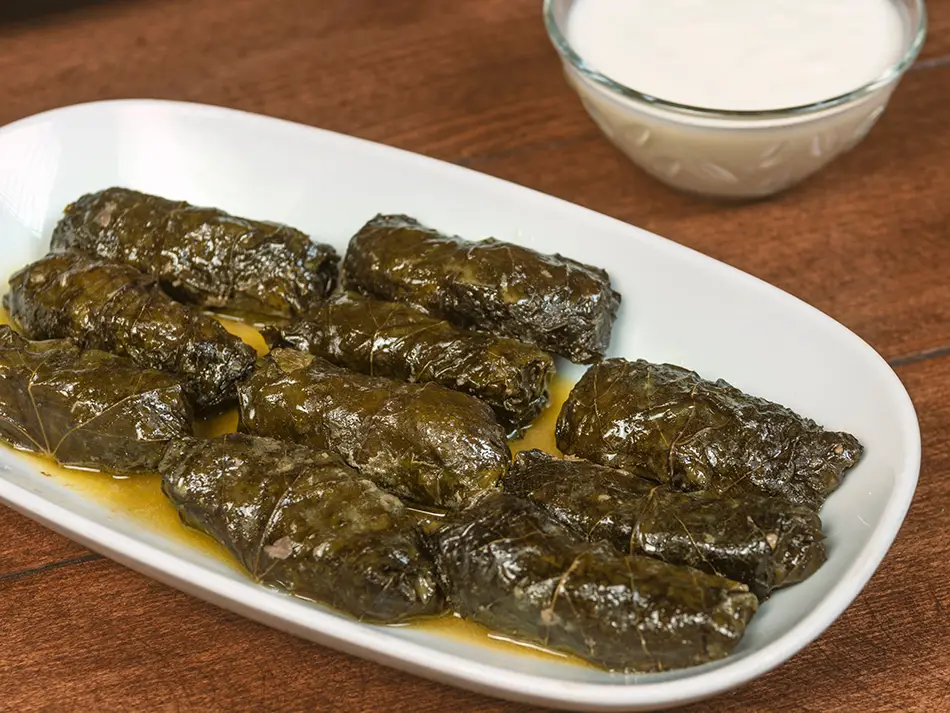
Dolma includes a mixture of meat and rice, typically wrapped in grape leaves or stuffed into hollowed vegetables such as eggplant, bell peppers, or tomatoes. The filling is seasoned with onions, herbs, and spices, then slow-cooked until tender.
Khorovats
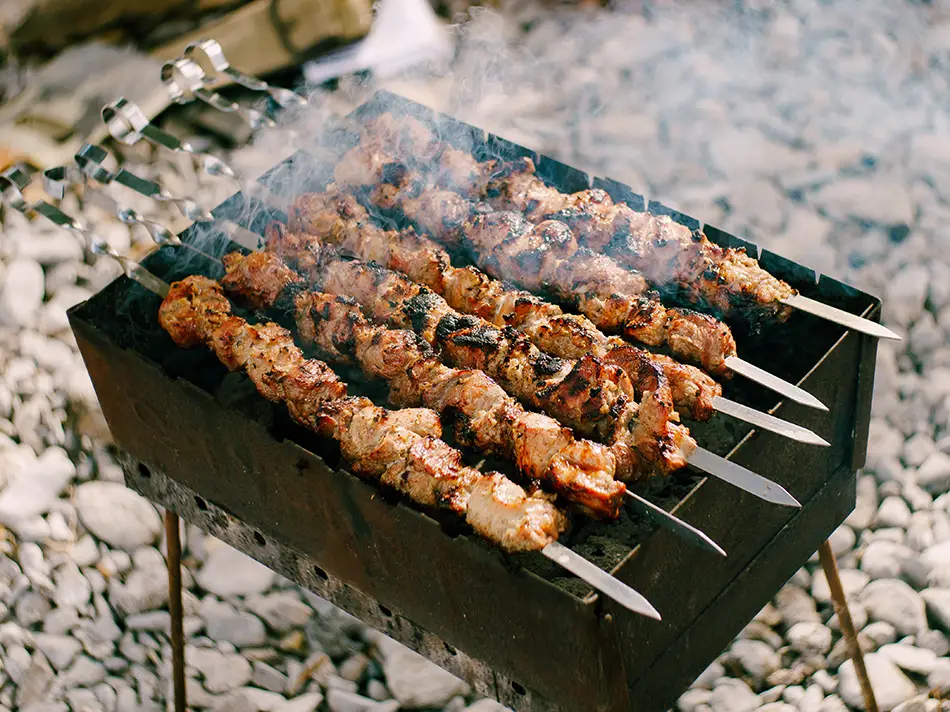
Khorovats is the general term for Armenian barbecue, encompassing skewered cuts of pork, lamb, chicken, or beef, marinated in onion, pepper, and herbs before being grilled over open flame. Vegetables such as eggplant and tomato are often charred alongside the meat.
Fun Fact
Khorovats is considered a national symbol and frequently featured at weddings and public festivals.
Ghapama
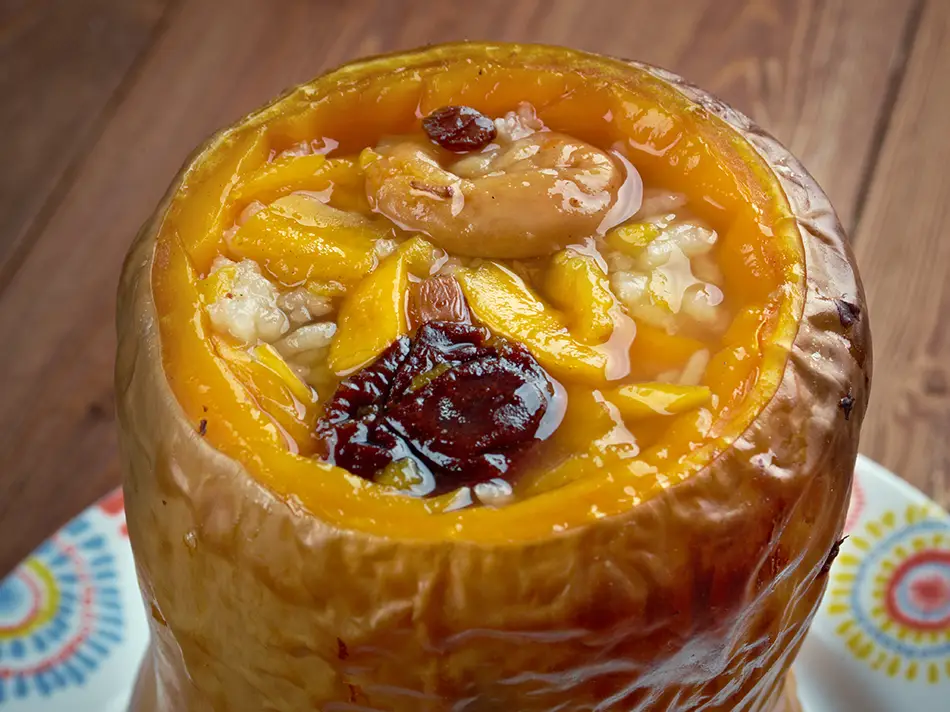
Ghapama is a stuffed pumpkin dish prepared by filling a hollowed pumpkin with rice, dried fruits (apricots, raisins), nuts, and sometimes cinnamon or honey. It’s then baked until the pumpkin is soft. The dish is festive and usually reserved for holidays like Christmas or weddings.
Tjvjik
Tjvjik is a sautéed offal dish, traditionally made with lamb liver, onions, and spices, fried until browned. It’s served with bread or as a main course. The dish is associated with Armenian resourceful cooking and was developed as a way to use every part of the animal.
Kiufta
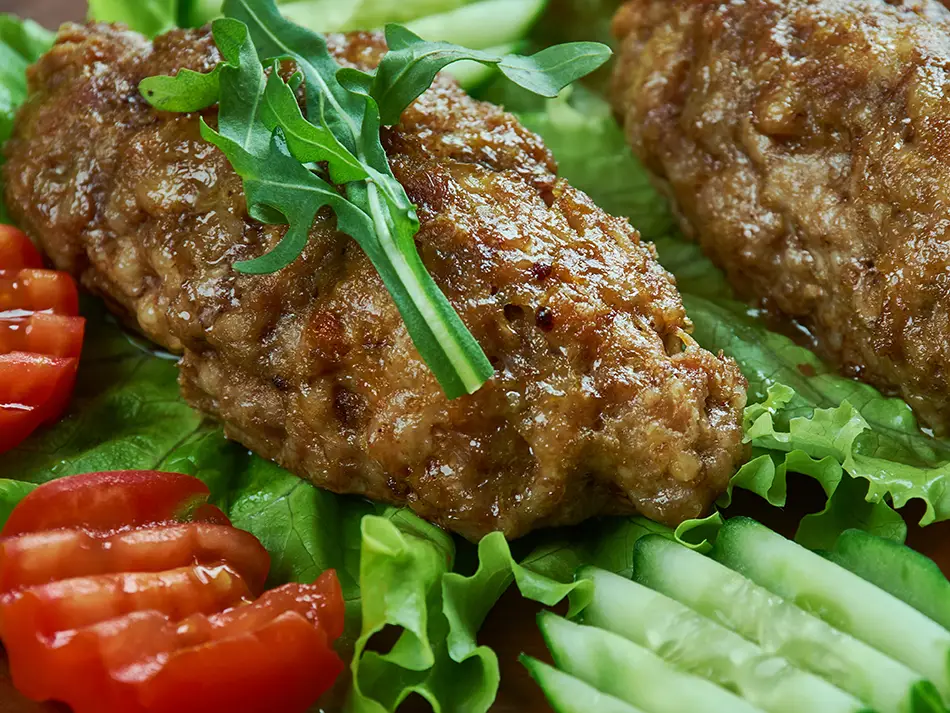
Kiufta refers to meatballs made of finely ground beef or lamb, mixed with onions, butter, and spices, often poached or steamed. There are multiple types: Ishli Kiufta has a bulgur shell around meat filling, while others are served in broth or as standalone balls. Gyumri is especially noted for its preparation of kiufta.
Manti
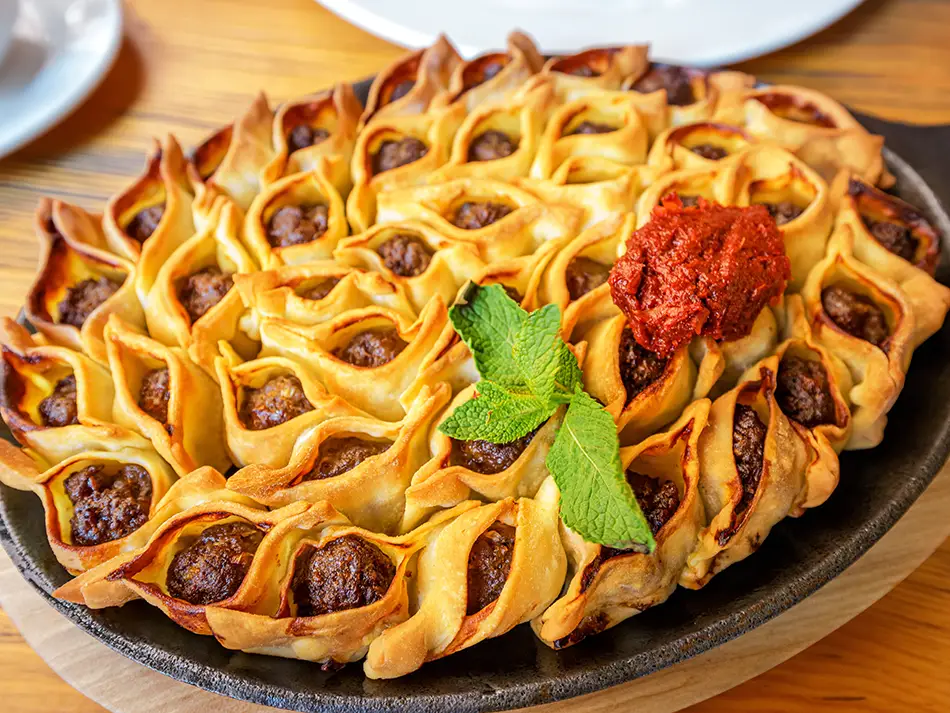
Manti are small, boat-shaped dumplings filled with minced meat, typically lamb or beef, and baked or steamed. In Armenia, they are often served in broth or topped with garlic yogurt.
Fun Fact: Manti are folded into canoe-like shapes and arranged closely to form crisp edges after baking.
Khashlama
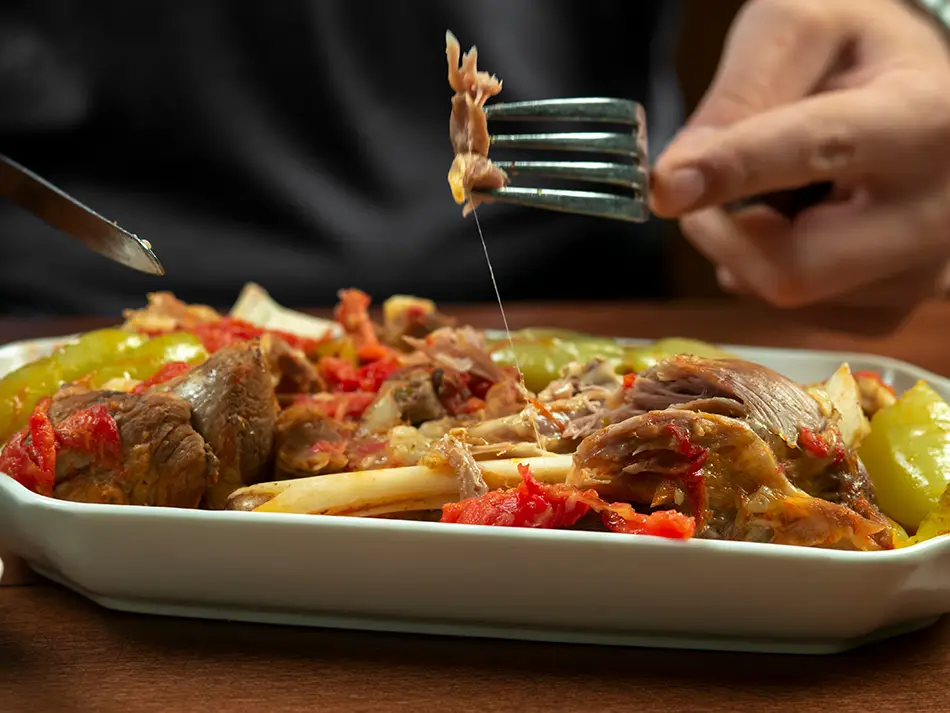
Khashlama is a meat-and-vegetable stew, usually made from lamb, potatoes, tomatoes, and herbs. Ingredients are layered without browning, then simmered gently. The dish is especially tied to rural traditions in Lori and Tavush and often prepared in outdoor cauldrons.
Khurjin
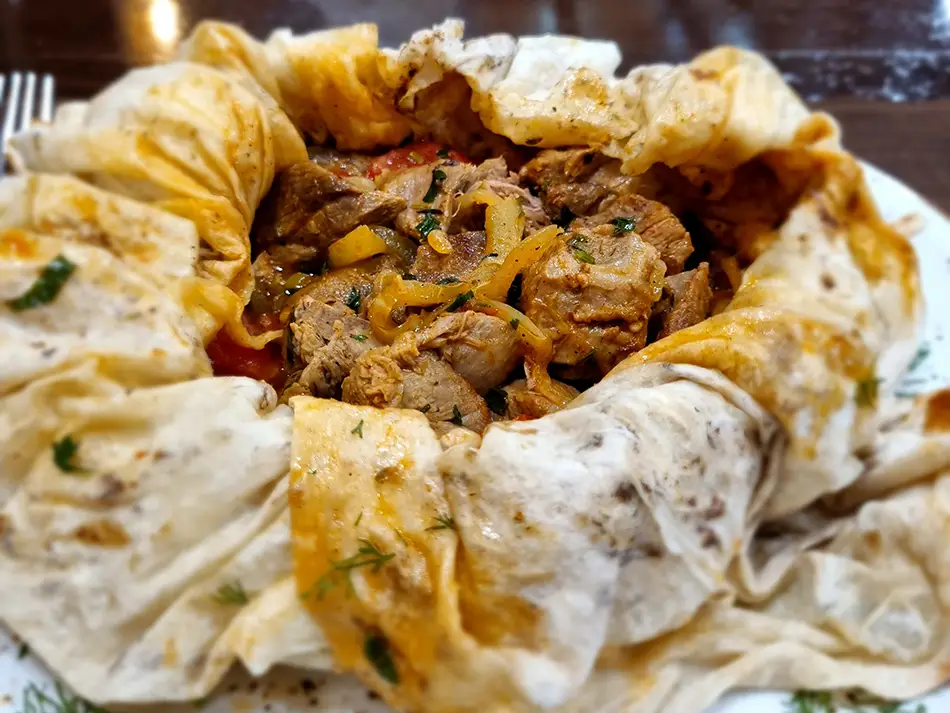
Khurjin translates to “saddlebag” and refers to lavash-wrapped meat and vegetable bundles, grilled or baked. The dish mimics the traditional saddlebags used by travelers. Inside are often cubes of beef, potatoes, and peppers.
Sevan Ishkhan
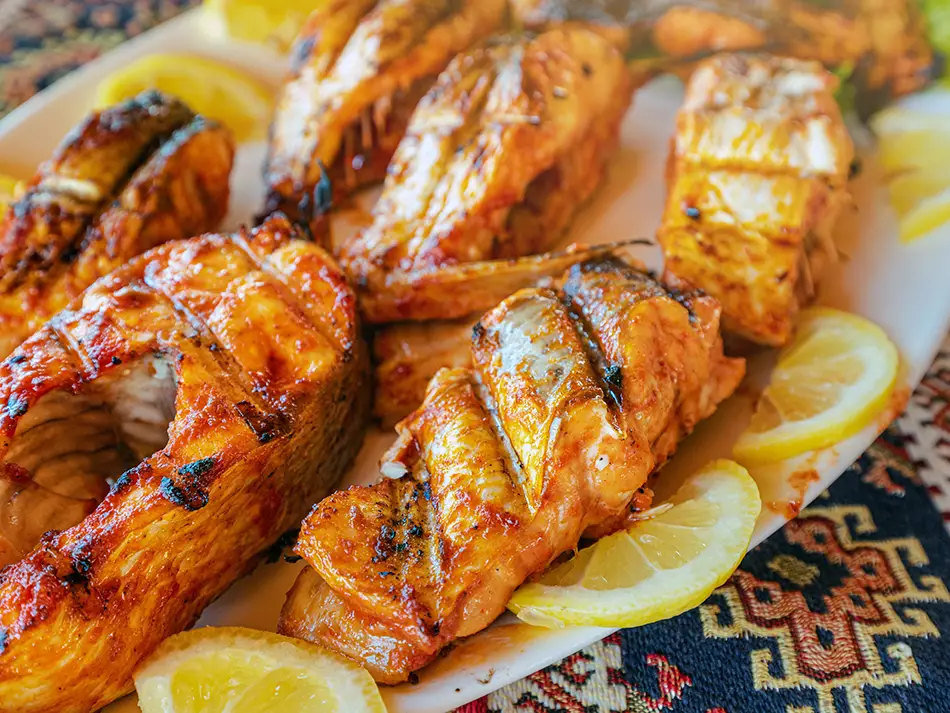
Sevan Ishkhan refers to the Armenian trout from Lake Sevan, considered a national delicacy. The fish is usually grilled or baked whole, seasoned lightly to preserve its delicate flavor. This freshwater trout is available only in the Lake Sevan region, and efforts are ongoing to conserve its habitat.
Armenian Street Food: Local Flavors and Quick Bites
Lahmajoun
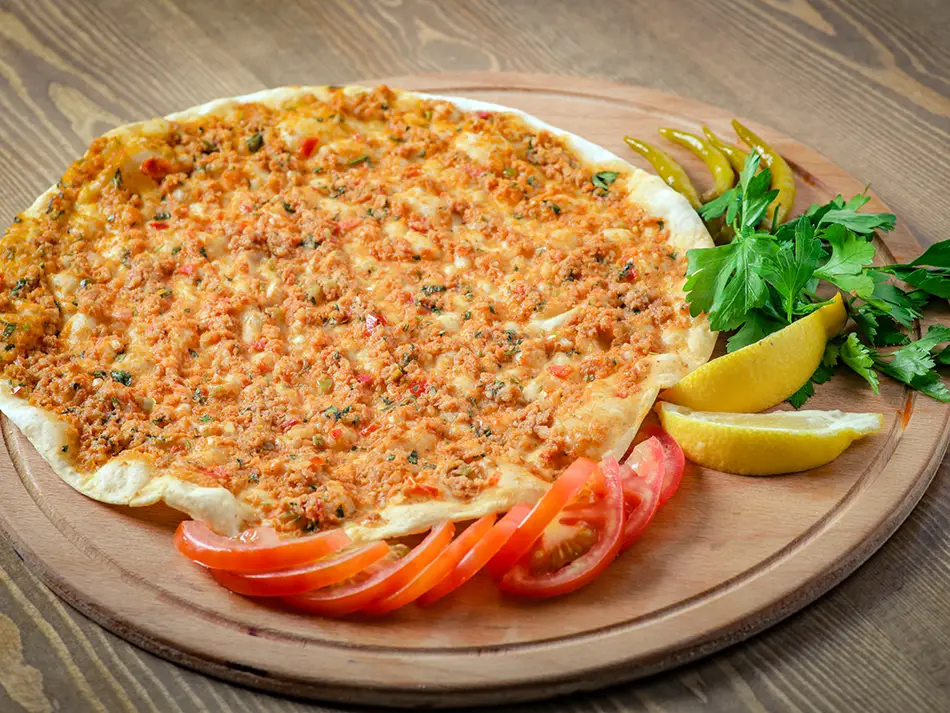
Lahmajoun is a thin flatbread topped with minced meat, usually lamb or beef, mixed with tomatoes, onions, garlic, and spices, then baked until crisp. Often called “Armenian pizza” (though it’s not), it’s eaten rolled up with parsley and lemon juice. It’s widely sold by street vendors and casual bakeries, especially in urban areas like Yerevan.
Boereg
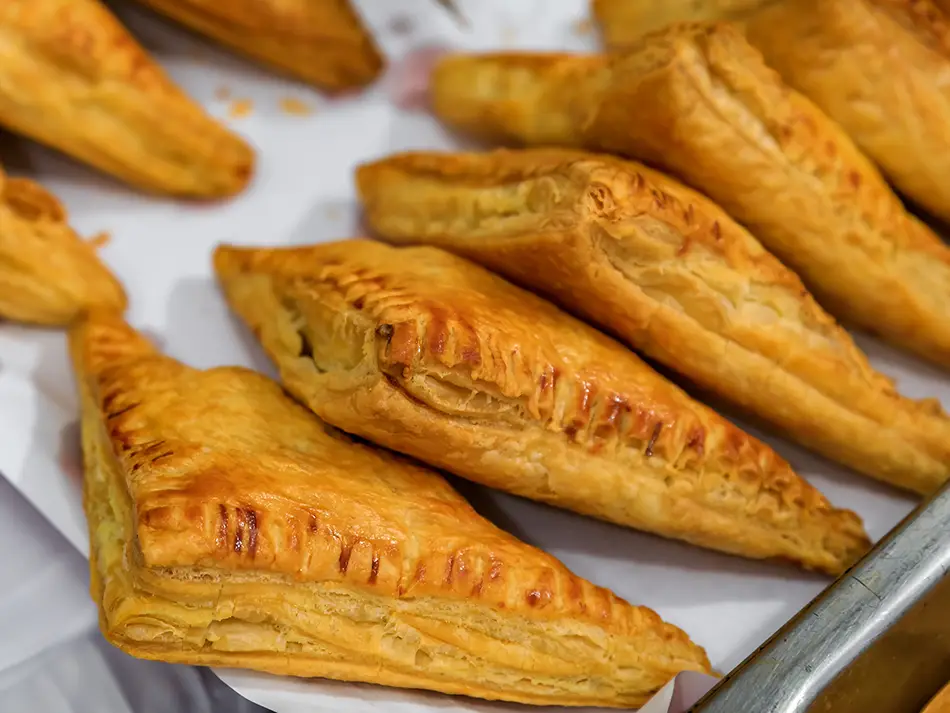
Boereg consists of thin pastry layers filled with various cheeses, herbs, or minced meat, then baked or fried. The cheese version is most common, using local white cheeses like Lori or Chanakh. Boereg comes in triangles, rolls, or squares and is a staple in street stalls and bakeries.
Sujukh (Yershig sausage)
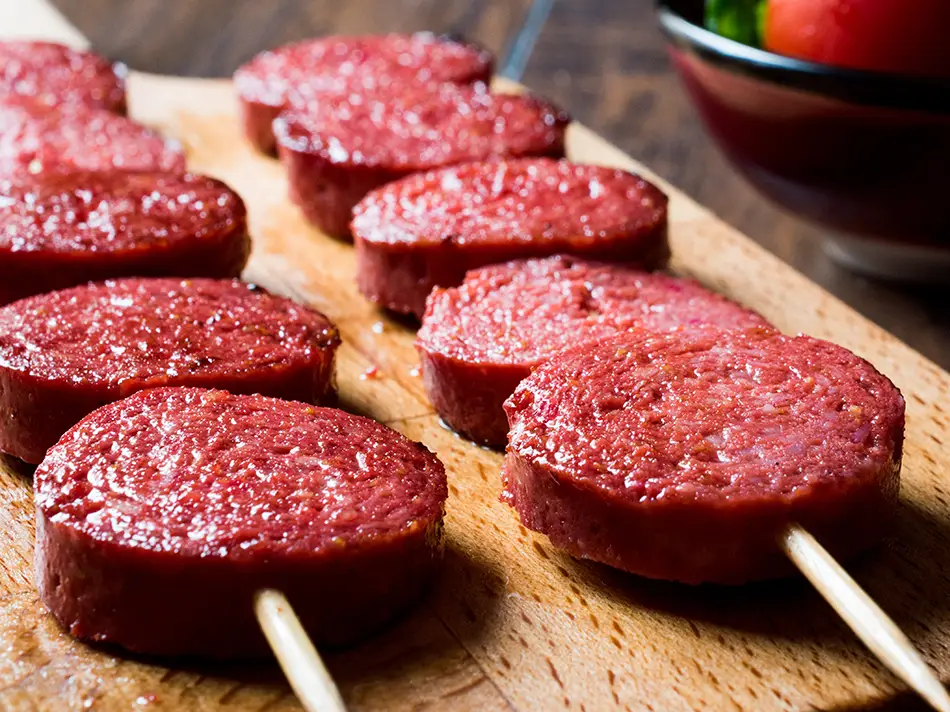
This version of sujukh is a dry, spicy sausage made from beef or lamb, heavily seasoned with garlic, cumin, paprika, and black pepper. It’s cured and air-dried, resulting in a dense, chewy texture. It’s served sliced with bread or pickles and often consumed during celebrations and winter months.
Breads & Unique Bakes: The Soul of Armenian Cuisine
Lavash
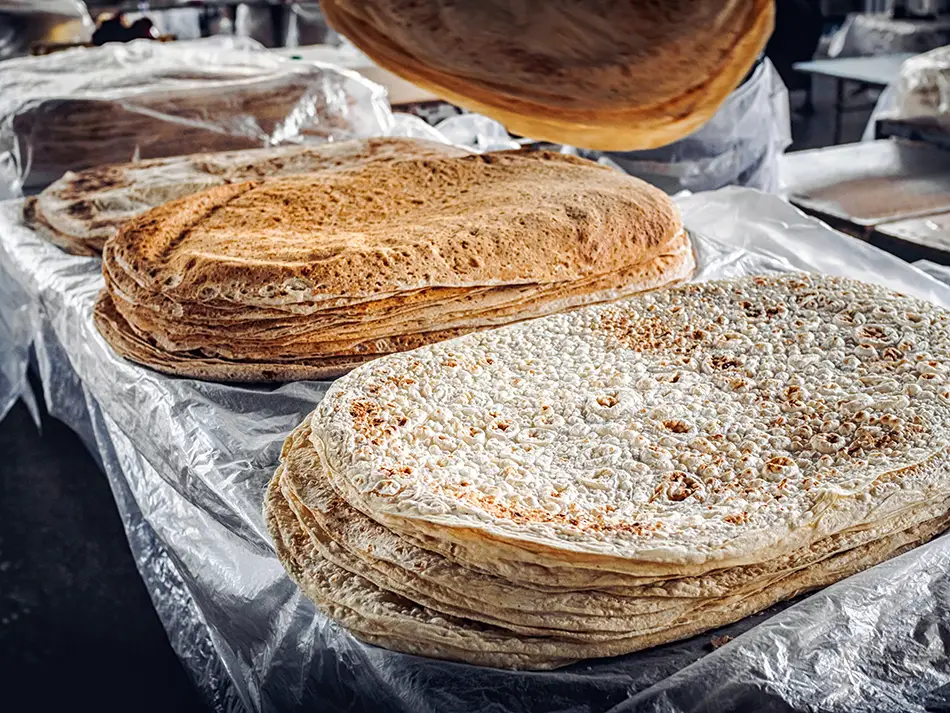
Lavash is the iconic Armenian flatbread, made from flour, water, and salt, rolled thin and baked against the walls of a tonir (traditional clay oven). When fresh, it’s soft and pliable; when dry, it’s stiff and shelf-stable. It accompanies almost every meal and can also be used to wrap foods.
Fun Fact
Lavash baking is recognized by UNESCO as part of Armenia’s intangible cultural heritage.
Matnakash
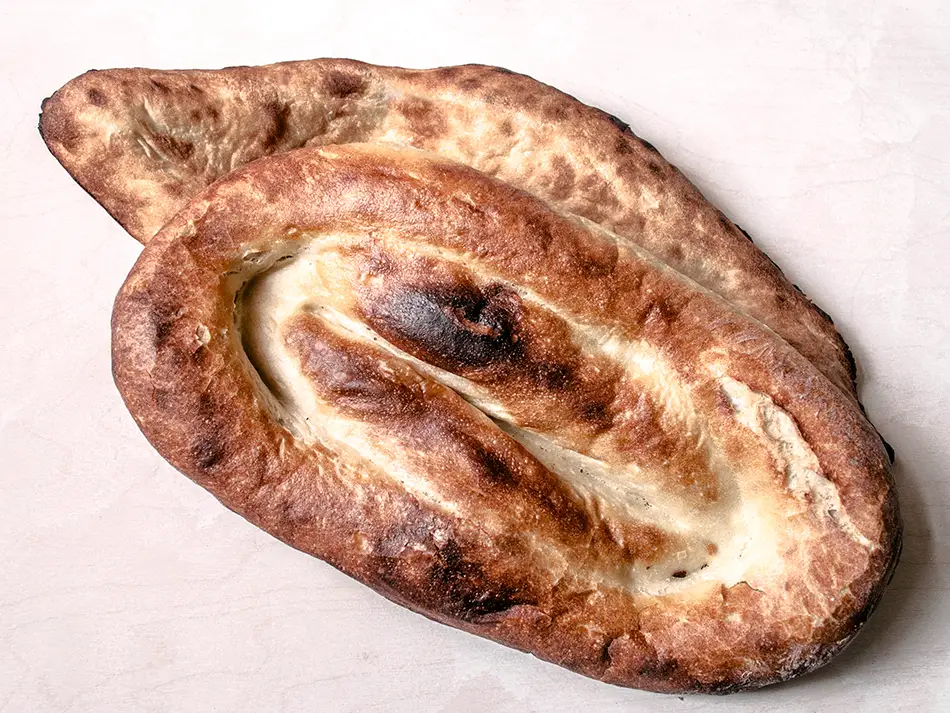
Matnakash is a leavened, oval-shaped bread with finger-drawn grooves along its surface. Made with wheat flour and yeast, it has a soft interior and slightly chewy crust. It’s baked on trays and best enjoyed fresh. The name means “finger pull” in Armenian, referencing how the shape is formed.
Choereg (Bsatir, Katnahunts)
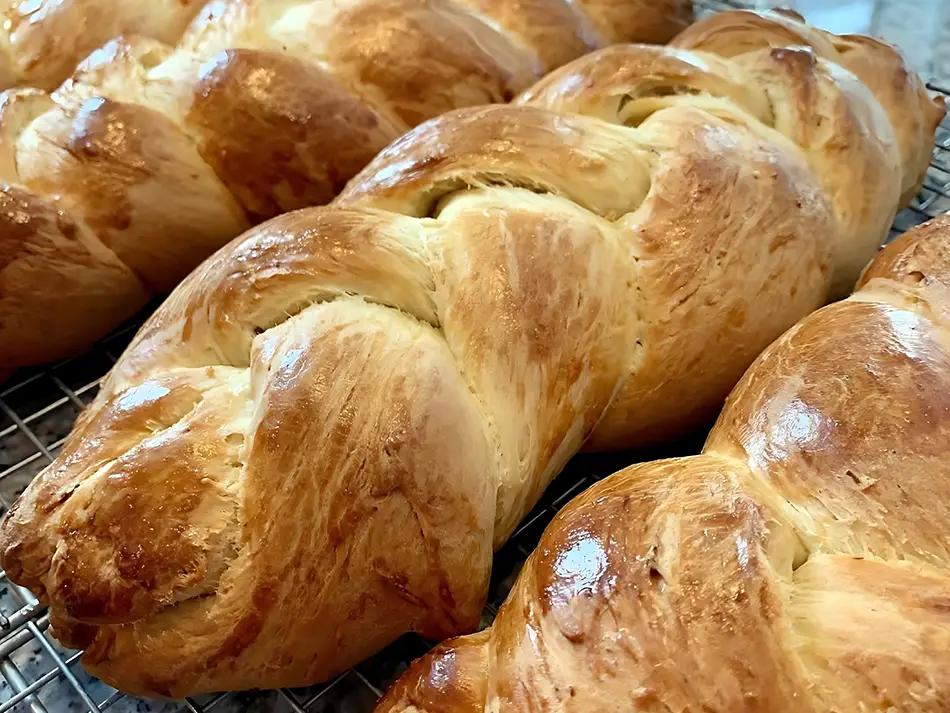
Choereg is a semi-sweet braided bread, often enriched with butter, milk, and eggs, and sometimes flavored with mahleb or vanilla. It’s traditionally baked for Easter and festive events, though variants like Bsatir (flaky) and Katnahunts(milk-based) appear year-round. The dough is soft, rich, and aromatic.
Zhingyalov Hats
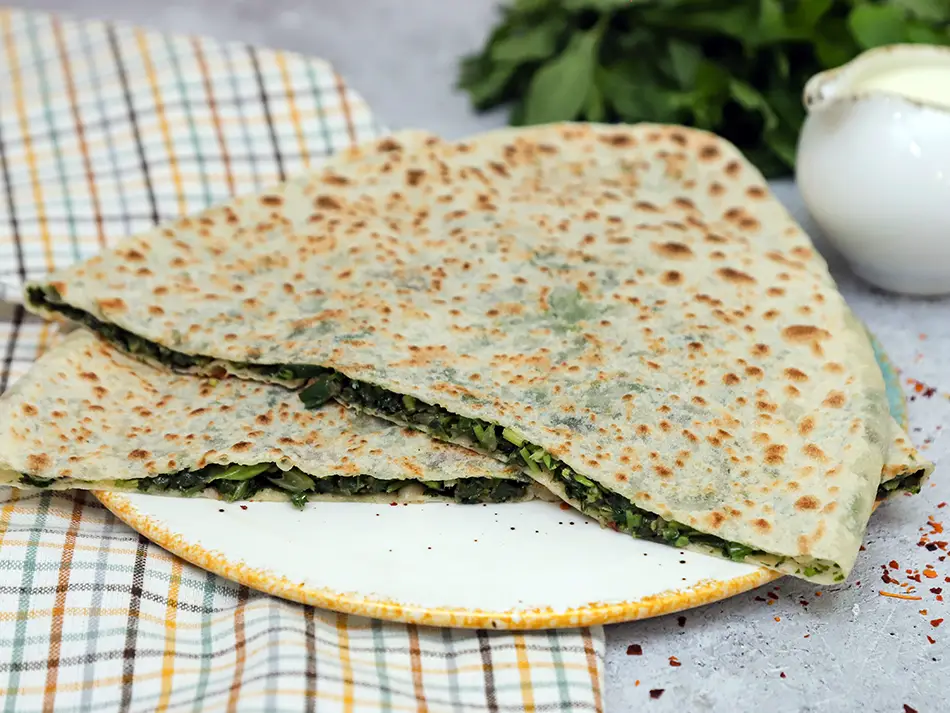
Zhingyalov hats is a herb-stuffed flatbread, filled with a mix of 10–20 chopped wild greens and herbs, then griddled until crisp. It originates from Artsakh and Syunik, where spring herbs are abundant. It’s especially tied to fasting periods and vegetarian diets.
Fun Fact
Each household may use a different blend of herbs, making no two zhingyalov hats exactly the same.
Tahinov Hats
Tahinov hats is a savory, rolled pastry made from soft, buttery dough filled with tahini paste. It’s shaped into spirals and baked until golden, with a rich, nutty flavor. This pastry is a popular tea-time snack and can be found in bakeries and homes across Armenia.
Sweet Treats: Discovering Armenia’s Best Desserts
Pakhlava
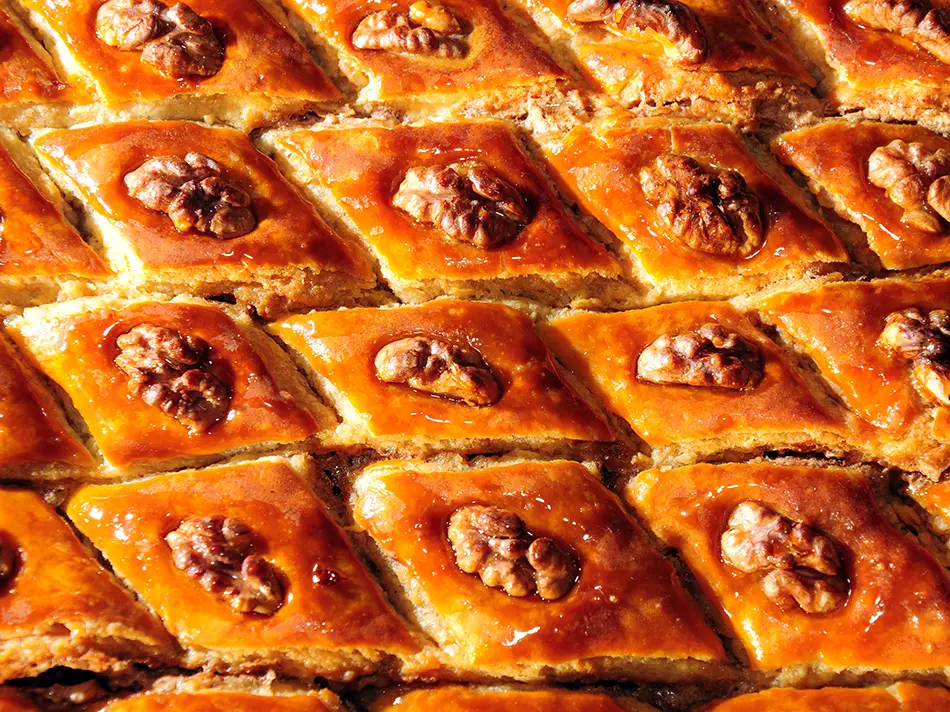
Armenian pakhlava is made from layered phyllo dough, filled with chopped nuts (often walnuts), and soaked in a light syrup or honey. It’s denser and less syrupy than other regional baklavas. The top is typically decorated with a single clove or nut.
Fun Fact
Pakhlava is often served at weddings and New Year celebrations in Armenia.
Gata

Gata is a sweet bread or pastry, filled with a simple mixture of sugar, butter, and flour called “khoriz.” There are many regional styles—from large round loaves with intricate patterns to smaller rolled or folded versions. It’s baked for feasts and special occasions, especially in Geghard and Garni regions.
Sweet Sujukh (Sharots)
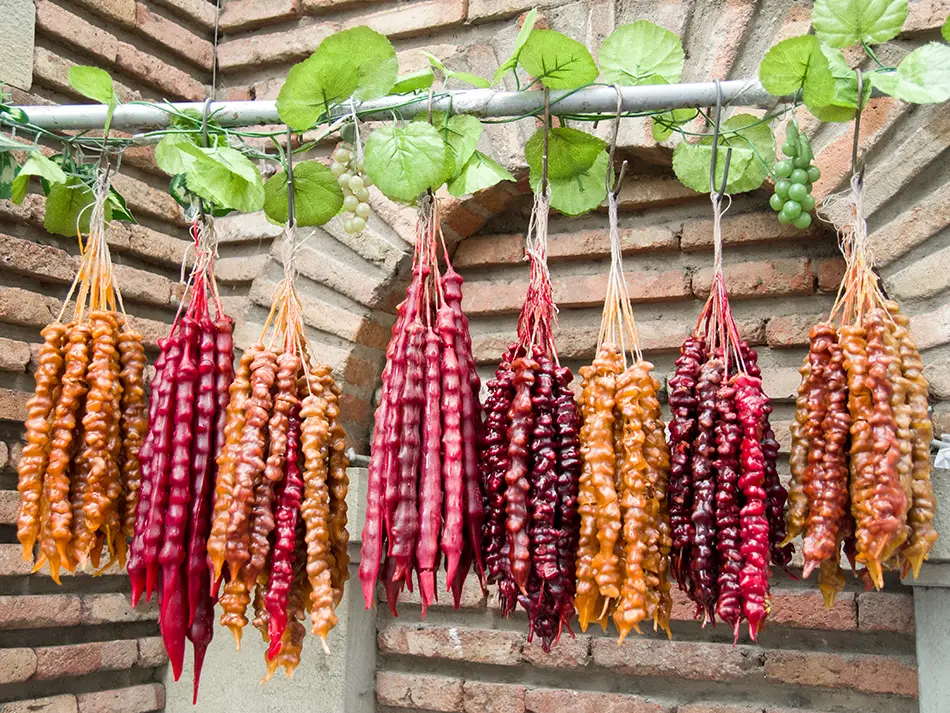
This dessert Sujukh, also known as Sharots, is a walnut or almond string dipped in thickened grape juice (mulberry or carob variants exist). The process is repeated until a thick, sausage-shaped layer forms. It’s dried and stored for months.
Fun Fact
Sharots is often prepared at home during the autumn grape harvest.
Pestil
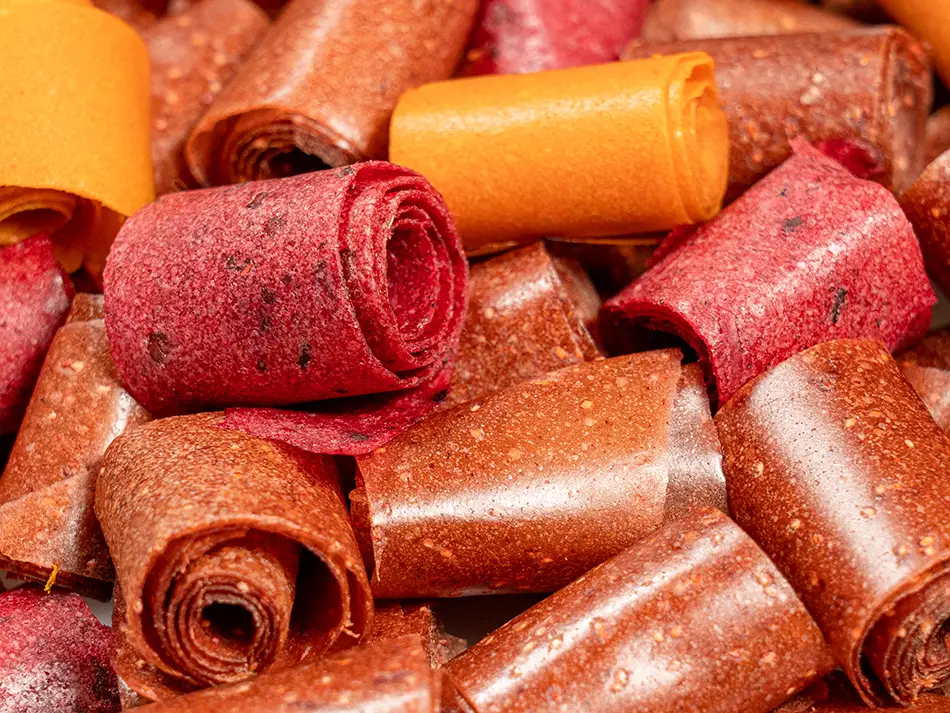
Pestil is a fruit leather, traditionally made by sun-drying pureed fruits such as plums, mulberries, or apricots. It’s thin, chewy, and sometimes layered with nuts. Pestil is made in rural areas during fruit season, especially in Ararat and Vayots Dzor.
Alani
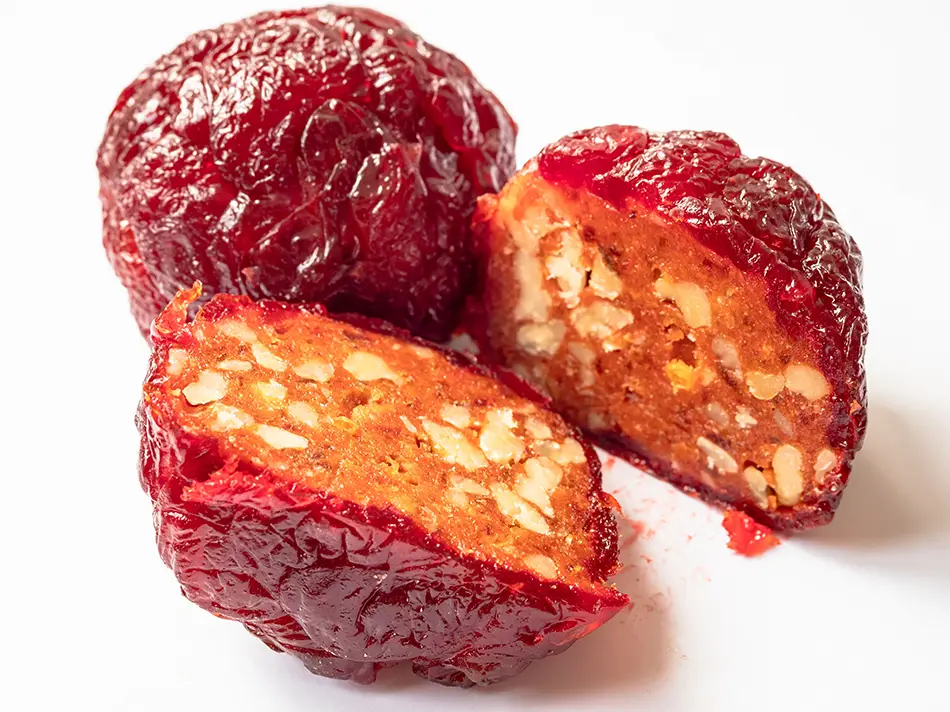
Alani are dried peaches stuffed with crushed walnuts and honey, then sun-dried again. They are chewy, sweet, and slightly tangy. Alani are commonly produced in Armenia’s apricot-growing regions like Ararat Valley.
Beverages: Popular Armenian Drinks You Shouldn’t Miss
Tan
Tan is a savory yogurt-based drink made by diluting matzoon with water and adding salt and herbs like mint. It’s served cold and functions as a refreshing accompaniment to heavy meals. It’s available both bottled and homemade throughout Armenia.
Armenian Wine
Armenian wine is made from local grape varieties grown in regions such as Vayots Dzor, Ararat, Tavush, and Armavir. Styles range from dry red and white to semi-sweet and amber wines. Vayots Dzor is especially known for the Areni grape and the Areni-1 cave, site of the oldest known winemaking facility. Today, both traditional and modern techniques are used across the country’s wineries.
Armenian Brandy
Armenian brandy is distilled from local grapes and aged in oak barrels, following techniques developed during the 19th century. It is known for its amber color and balanced character. The most recognized producer is the Yerevan Brandy Company, maker of Ararat brandy, which played a historic role in popularizing Armenian brandy internationally. Today, several producers across the country continue the tradition, with brandy often served during celebrations and formal toasts.
Armenian Coffee
Armenian coffee is finely ground dark roast coffee, brewed unfiltered in a jazzve (copper pot) over low heat. It’s served in small cups with grounds settled at the bottom. Sugar is added during brewing, not after. Coffee drinking is an important daily ritual.
Oghi
Oghi is a traditional fruit vodka, distilled from mulberries, apricots, or grapes. It’s strong and usually homemade, often consumed during toasts and celebrations. Oghi is closely tied to rural and community celebrations.
Armenian Mineral Water
Armenia produces several types of naturally carbonated mineral water, sourced from volcanic springs across the country. Popular brands include Jermuk, Bjni, Arzni, and Lori. Known for their high mineral content, these waters are commonly consumed for digestive health and served as table drinks both at home and in restaurants.
Grab the Food Journal & Join the Table
Ready to taste your way through the country? Use this guide as your travel companion—and let your appetite lead the way. From market bites to holiday feasts, the best food to try in Armenia brings you closer to the people, places, and traditions that make this cuisine so unforgettable.
👉 Download your Armenian Food Journal PDF to track every dish you try, note your favorites, and compare local versions as you go.
Once your gastro journey is complete, we’d love to hear from you. If you feel like sharing your filled-out diary, please send it to [email protected].
We may use your culinary notes to improve future guides — but don’t worry, we never store your name, email, or any personal details.
Bon appétit and safe travels.
Armenia is ready to serve you something special.

